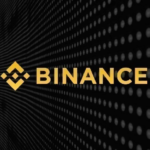Ant Group is betting that the next leap forward in digital finance will come with Ethereum, not banks.
On October 14, the Chinese fintech giant behind Alipay’s 1.4 billion user payment network launched Jovay, a new layer 2 (L2) blockchain built on Ethereum to move real-world assets (RWA) on-chain at an institutional scale.
What is Jobey?
Ant Digital, the blockchain arm of Ant Group, describes Jovay as a “compliance-first, AI-assisted scaling network” that aims to integrate real-world data and value flows into decentralized finance.
The platform uses a dual prover that is a zero-knowledge and optimistic hybrid to ensure both scalability and verifiability. This is intentionally launching without a native token, indicating a focus on corporate and institutional adoption rather than retail speculation.
The impact is enormous. Alipay has 1.4 billion monthly active users and processes trillions of payment amounts annually. If even some of that activity moves to Ethereum rail through Jovay, this network could become one of the most important infrastructure bridges in global finance.
According to Jovay’s technical documentation, the network achieved 15,700 to 22,000 transactions per second (TPS) during testnet trials and is targeting 100,000 TPS through node clustering and horizontal expansion.
This will be significantly higher than what is currently available in Ethereum’s Layer 2 ecosystem led by Coinbase-backed Base. According to L2Beats data, Base handles approximately 93 TPS.
RWA paper
Real-world assets (RWA) have quietly become Ethereum’s fastest growing segment. According to RWA.xyz, the value of tokenized treasuries, bills, and funds on Ethereum is now over $12 billion, an increase of over 300% since the beginning of 2024.
However, most of that liquidity is still limited to niche protocols with limited regulatory clarity.
Jovay’s model introduces a five-step pipeline: asset registration, structuring, tokenization, issuance, and trading. Each step incorporates validation checkpoints and off-chain data certificates, effectively providing regulators with the same line of sight as traditional finance.
By integrating AntChain’s enterprise registry with Ethereum, Jovay has the potential to enable bilateral payments between authorized institutions and on-chain liquidity providers.
For example, banks issuing digital bonds on Jovay can instantly settle with their DeFi counterparties without exposing internal data or violating their jurisdiction’s regulations.
Considering this, Abbas Khan, Founder Success Manager at the Ethereum Foundation, said:
“This is not another startup experiment. This is a signal that the next stage of global finance is being built on the rails of Ethereum… In China, Alipay is not an app. It is an infrastructure layer for everyday life, payments, loans, insurance, identity, mobility, etc. And now Ant Group is bringing that infrastructure on-chain.”
The macro bet behind Ant’s blockchain
Ant Group’s move into Ethereum signals a tectonic shift in how global fintech companies view blockchain risks.
Large companies have long favored permissioned ledgers like Hyperledger to avoid volatility and public chain exposure. That calculus is changing as governments and other large financial institutions increasingly experiment with public blockchains like Ethereum for their own benefit.
By building Jovay on Ethereum rather than its own network, Ant effectively validates public infrastructure as the foundation for institutional finance.
Additionally, the move is both a hedge against technological isolation and a move toward interoperability, as assets minted on Jovay will in principle have access to Ethereum’s $100 billion DeFi ecosystem.
The cost profile supports this move.
The report revealed that the Coinbase-backed Base network has contributed less than $5 million in blob and payment fees to Ethereum’s Layer 1 validators since its launch in 2023. This equates to a 98% margin compared to validator costs faced by standalone chains.
For Ant, that efficiency translates into cheaper payments for its billion-strong user base.
Ethereum’s quiet victory
Jovay’s debut also reflects how Ethereum is slowly gaining institutional trust. What once seemed like a shaky experiment has become a neutral payment layer that banks and fintech giants can trust without relinquishing control.
If Jovay gains traction, Ethereum’s tokenized financial share could expand beyond today’s RWA niche market.
This means that every new asset class introduced on-chain, such as energy credits or municipal bonds, creates new demand for ETH blockspace and liquidity routing.
As Khan said, Ant’s move suggests that the next billion users will not arrive through meme coins or yield farming.
Instead, they emerge as their assets, savings, and credit products are quietly migrated to compliant rails running on Ethereum.






